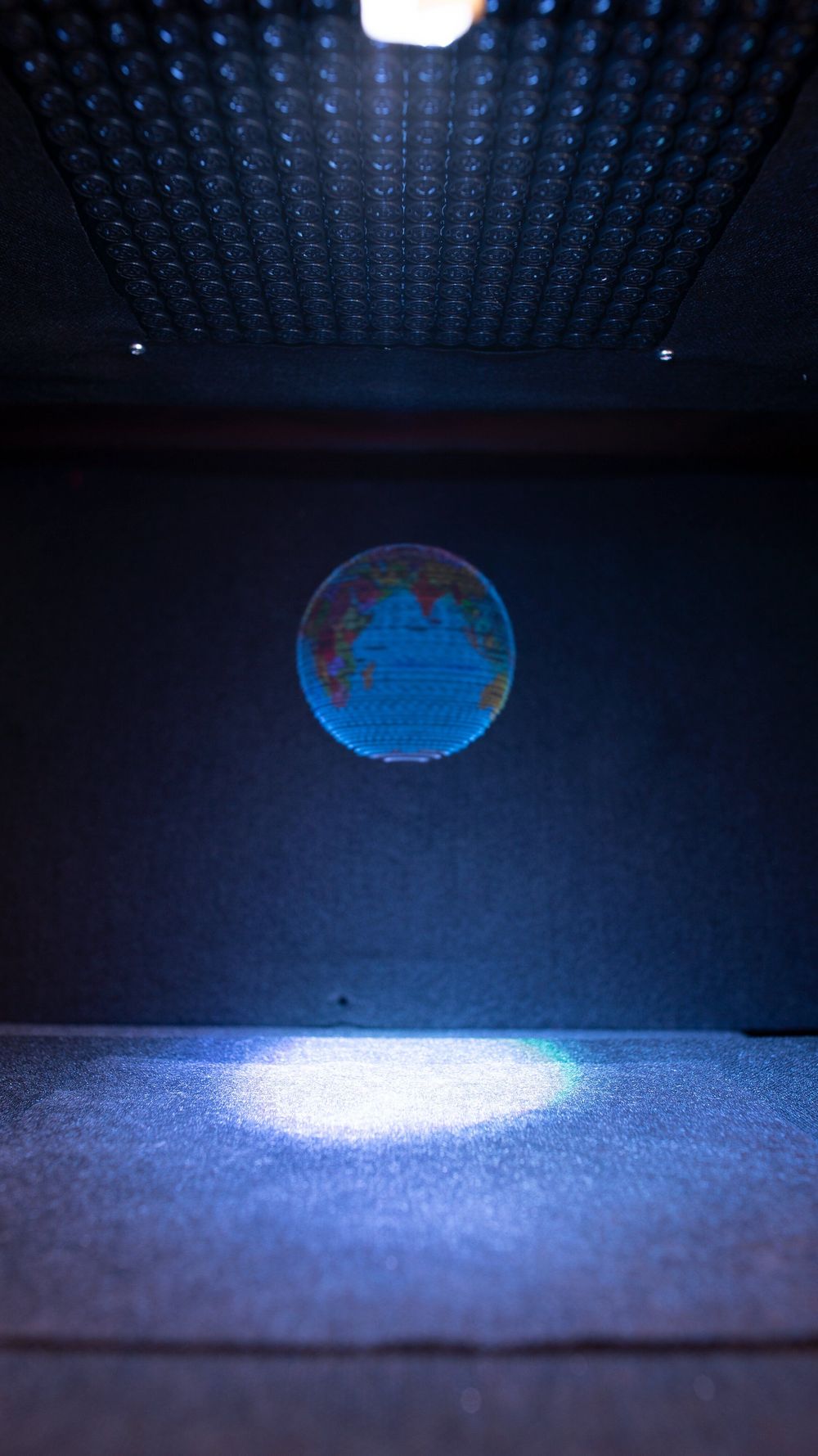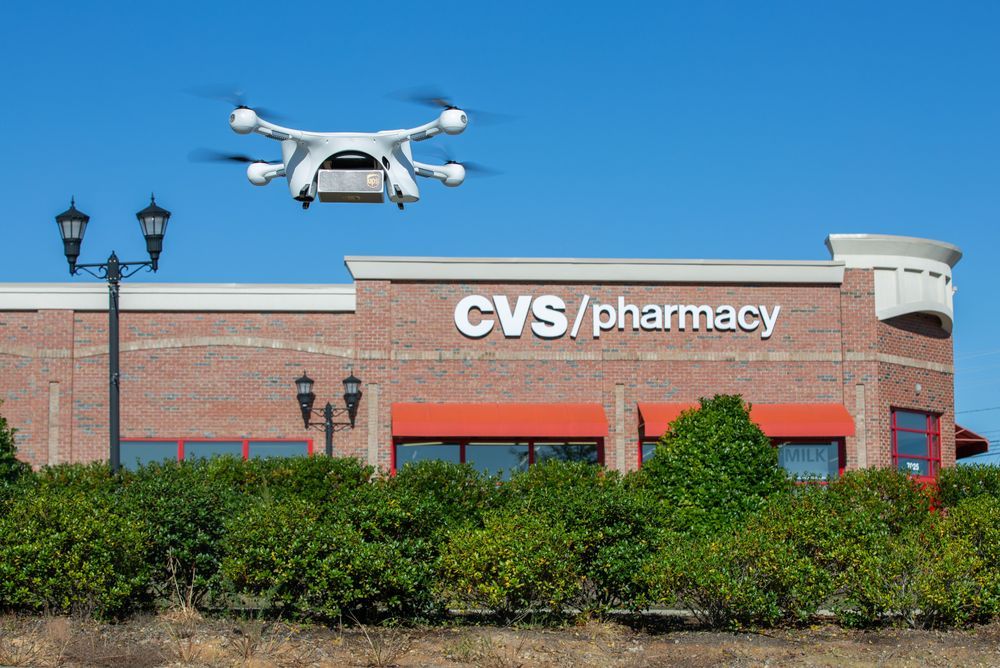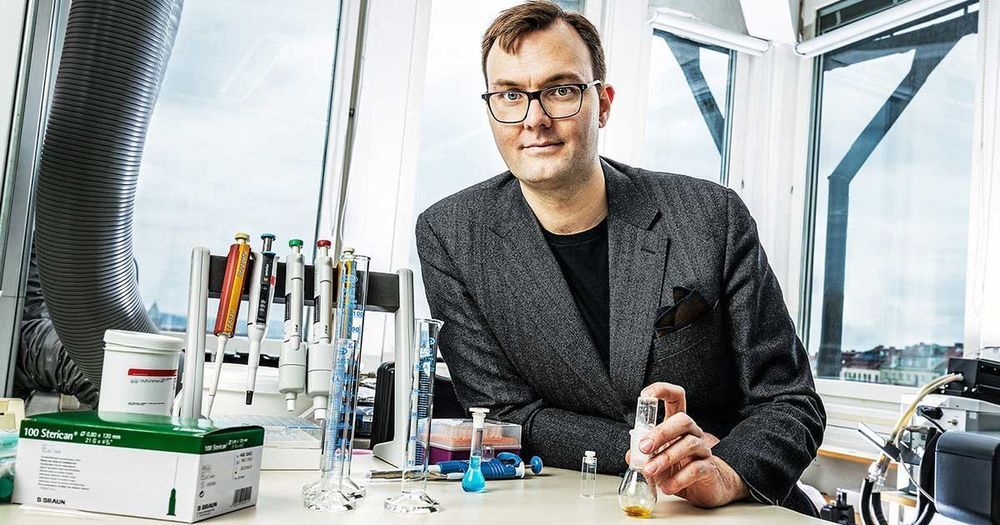Caption: Two minute explainer video of the Multimodal Acoustic Trap Display developed at the University of Sussex.
Credit: Eimontas Jankauskis
Caption: Two minute explainer video of the Multimodal Acoustic Trap Display developed at the University of Sussex.
Credit: Eimontas Jankauskis

Walking, talking holograms have been a staple of sci-fi films since Princess Leia was magically brought to life in “Star Wars”.
Now scientists in Britain say they can make even more realistic 3D versions—a butterfly, a globe, an emoji—which can be seen with the naked eye, heard and even felt without the need for any virtual reality systems.
Writing in the journal Nature, a team at the University of Sussex in southern England, said technology currently in use can create 3D images but they are slow, short-lived and “most importantly, rely on operating principles that cannot produce tactile and auditive content as well”.

UPS is rolling along with its drone delivery program, working with partner CVS Pharmacy to deliver prescription drugs to customer doorsteps via its newly deployed commercial drones. UPS delivered medications to two paying customers on November 1 using the Matternet M2 drone system that the logistics company is using in partnership with Matternet…

Daily sun, earth and science news
Need to Catch Up?
CLIMATE FORCING: https://youtu.be/rEWoPzaDmOA
CLIMATE FORCING [Short]: https://youtu.be/tul07hx8V8w
PLASMA COSMOLOGY: https://youtu.be/E4pWZGBpWP0
PLASMA COSMOLOGY [Short]: https://youtu.be/G48V-Fmh4uc
COSMIC DISASTER: https://youtu.be/B_zfMyzXqfI
Lots more on our channel page, just click our name!
Our Websites:
https://www.Suspicious0bservers.org
https://www.SpaceWeatherNews.com
https://www.QuakeWatch.net
https://www.ObservatoryProject.com
https://www.MagneticReversal.org
Facebook: https://www.facebook.com/observatoryproject/
Alerts on Twitter: https://twitter.com/TheRealS0s
Instagram: https://www.instagram.com/mobileobservatoryproject
Wanted- Earthquake Forecasters: https://youtu.be/l1iGTd84oys
Scientists at Harvard have created a texture in meat grown in a lab close to the actual animal meat we’re used to. Would you eat it?
» Subscribe to Seeker!http://bit.ly/subscribeseeker
» Watch more Elements! http://bit.ly/ElementsPlaylist
Human meat consumption is bad for the planet—livestock raised for food makes up for approximately 14–18% of our greenhouse gas emissions, and the land requirements to grow their food is responsible for nearly 80% of all deforestation in the Amazon.
80%!
So scientists have been working to create a realistic imitation for animal meat in a lab, and with a recent breakthrough researchers from Harvard have come one step closer to making lab-grown meat taste and feel like the real deal.
How?
Gelatin.
This vegetarian butcher makes plant-based meals that look and taste like real meat. Look out for our weekly Pioneers for the Planet videos, a collaboration with WWF #Netflix #OurPlanet #ShareOurPlanet #VoiceForThePlanet
A huge test for the fuel of the future.
Goodbye, bulky A/C units: This film can cool an entire building.
How a tiny beetle could help us harvest water from thin air.